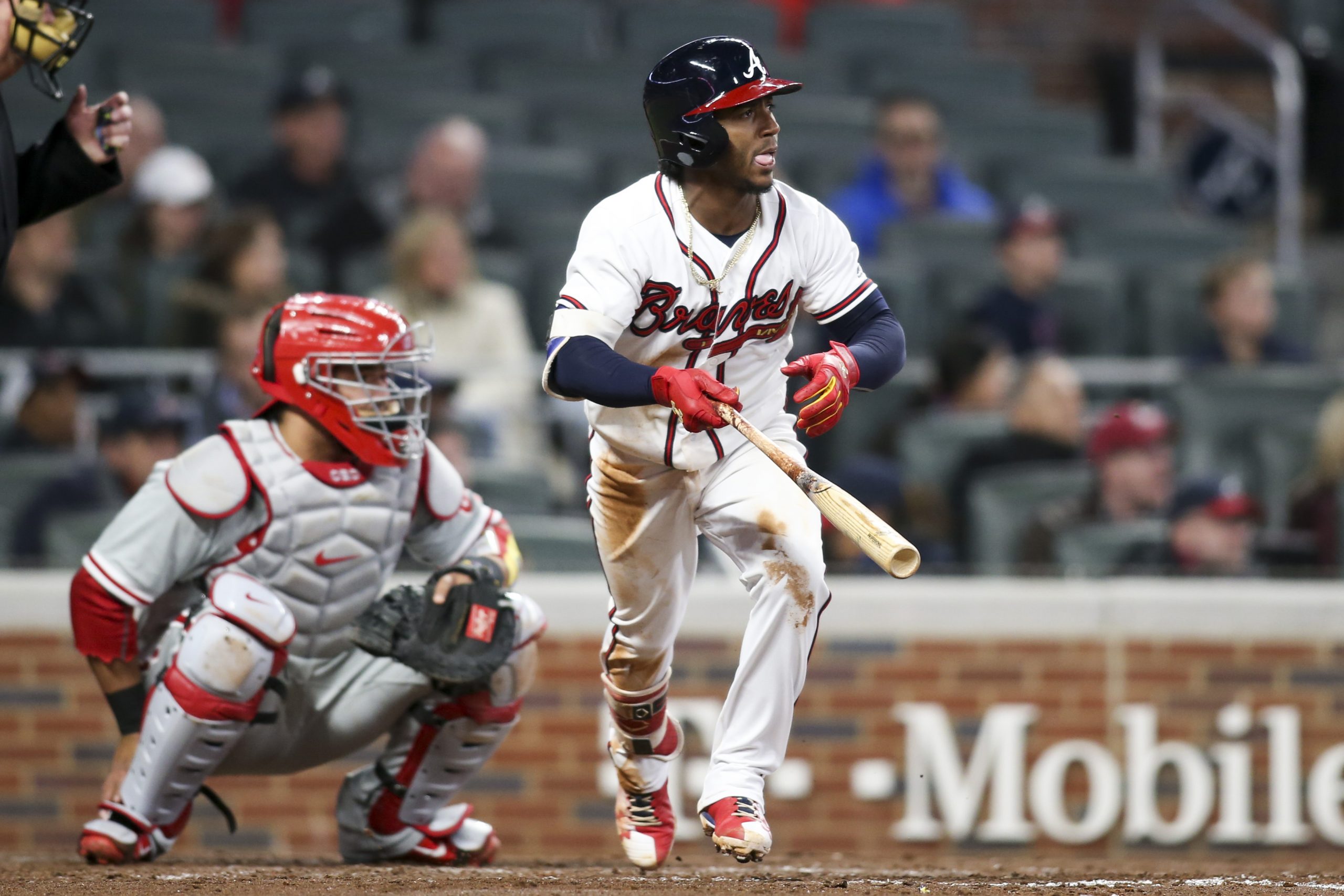One of the many beautiful things about baseball is that you can’t predict what will happen on any given night. We can have a general idea of what might take place based on past performance, but none of us know what’s actually going to transpire on the field until the game gets started.
The Atlanta Braves aren’t expected to be legitimate playoff contenders in the coming weeks and months. However, that hasn’t stopped them from jumping out to a 9-7 start and battling with the Philadelphia Phillies for second place in the National League East.
There’s obviously plenty of time for this to change, but it’s been an encouraging start for an Atlanta team that’s been rebuilding for a while. One of the players that’s been a big part of this is second baseman, Ozzie Albies.
This is an important campaign for the 21-year-old as he embarks on his first full big-league season, and he couldn’t have gotten things off to a much better start. Through 75 plate appearances, he’s slashing .310/.338/.662 with 5 home runs, 11 RBI, and 16 runs scored. These numbers have helped lead to a 175 wRC+, .427 wOBA, and a 0.9 fWAR.
His ability to record extra-base hits has been noted, too — Albies collected 14 hits for extra bases in the Braves’ first 15 games. The only player in franchise history with more than that over the last 100 years is Hank Aaron, who collected 15 extra-base hits in his first 15 games of the 1959 season.
What’s interesting about Albies’ early-season performance, though, is that his production has been rather lopsided.
Annihilating Southpaws
While the sample sizes are vastly different at this point in the season — and will likely stay that way to a degree moving forward — it’s intriguing to see just how much of Albies’ production has come from facing left-handed and right-handed pitching.
Here’s a quick look at how his numbers compare in a variety of categories.
The rate stats are obviously going to be out of whack because of the variance in opportunity, but it’s worth pointing out how many extra-base hits came in substantially fewer plate appearances.
While the quality-of-contact percentages should also be taken with a grain of salt, they back up some of the stats we’re seeing above. Against southpaws, Albies has produced a 6.7% soft-hit rate and 46.7% hard-hit rate. Those numbers are 20.0% and 28.9%, respectively, when facing right-handers.
Feasting on the Road
So far in 2018, SunTrust Park — the home of the Braves — has been one of baseball’s best places for offense, according to ESPN’s Park Factors. You’d never know that by looking at how Atlanta’s second baseman has produced in front of the home fans.
Using the same statistics as before, here’s how Albies’ performance at home has differed from being on the road.
Since the sample sizes are similar, this is an interesting comparison to make. It’s a continuation of a trend from his abbreviated rookie campaign, but the 2018 version (up to this point, at least) displays a more striking contrast.
His batted-ball profile and quality-of-contact numbers aren’t all that different, either. The only thing that really jumps out right now is his pull rate, which is 41.4% at home and 48.4% on the road.
A Trend That’ll Hopefully Continue
If we use wRC+ as the measure, Albies struggled the most against changeups and curveballs as a rookie in 2017. He produced just a 40 wRC+ and .218 wOBA against changeups, and those numbers dipped even lower to -13 and .316, respectively, against curveballs.
So far in 2018, though, his performance against these offerings has increased dramatically. Here’s a look at how the above numbers have shifted in the early going.
There’s still a long ways to go before something like this stabilizes, but it’s still a staggering turnaround. It is worth noting that Albies’ BABIP against these pitches are high (.417 vs. changeups, .375 vs. curveballs), especially when considering he owns a ground-ball rate above 57.1% for each.
He does have a 28.6% line-drive rate against changeups, but his chase rate in these situations are currently up over 50.0%.
One Thing to Flesh Out
The elephant in the room is Albies’ walk rate, which is almost nonexistent at 2.7%. We don’t know exactly what the story is about in just 75 plate appearances, but he’s got a long way to go if his goal is to come close to last year’s 8.6% rate.
While he’s still swinging a lot overall (52.3% swing rate), his 34.2% chase rate isn’t far off last year (33.3%) while his 77.3% swing rate on strikes has shown a bigger change from 2017 (73.4%).
The process he’s taking with his approach at the plate can provide some confidence that things will eventually normalize. There’s no way around saying how impressive Albies has been to start 2018 — anytime you get mentioned in the same breath as Hank Aaron, you’re doing something right.
However, in order to seemingly take a substantial step forward in his development as a player and hitter, there needs to be a little more consistency across the board.
About Matt Musico
Matt Musico currently manages Chin Music Baseball and contributes to The Sports Daily. His past work has been featured at numberFire, Yahoo! Sports and Bleacher Report. He’s also written a book about how to become a sports blogger. You can sign up for his email newsletter here.
Add The Sports Daily to your Google News Feed!
